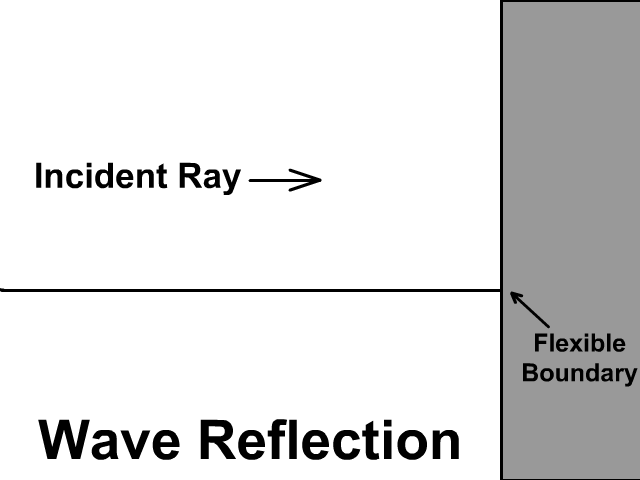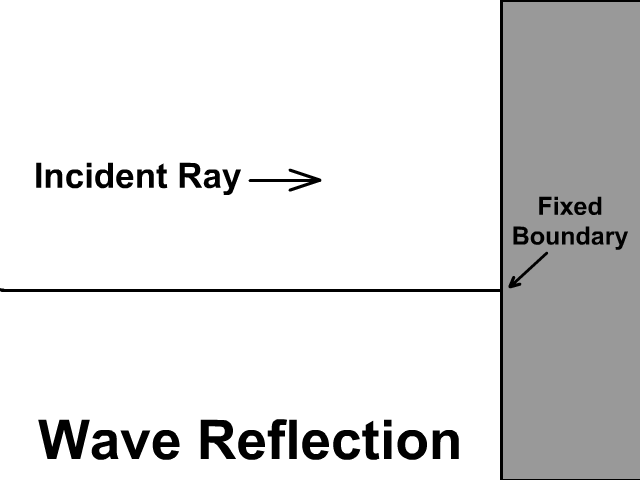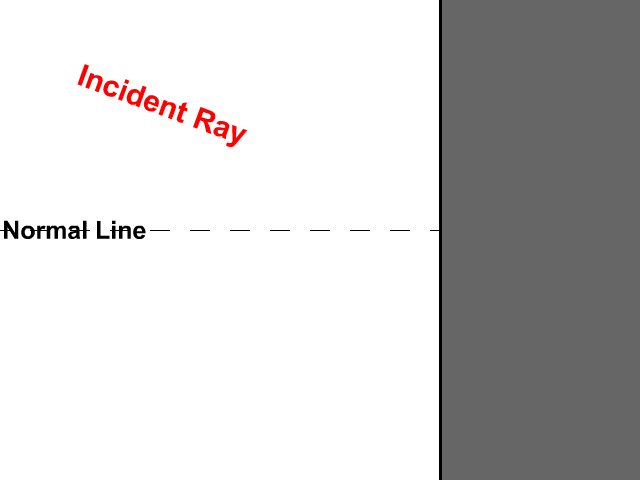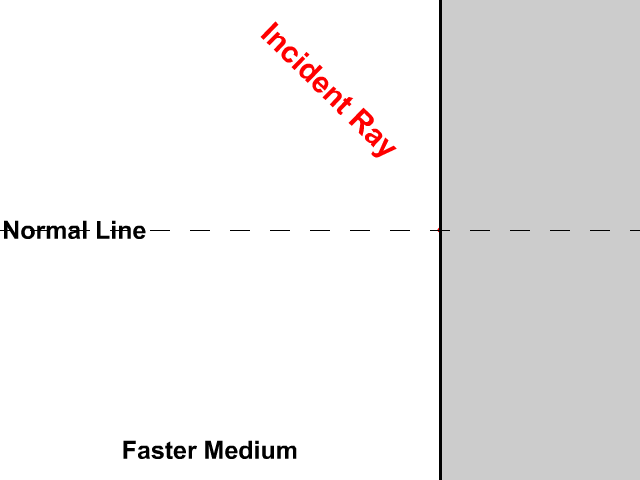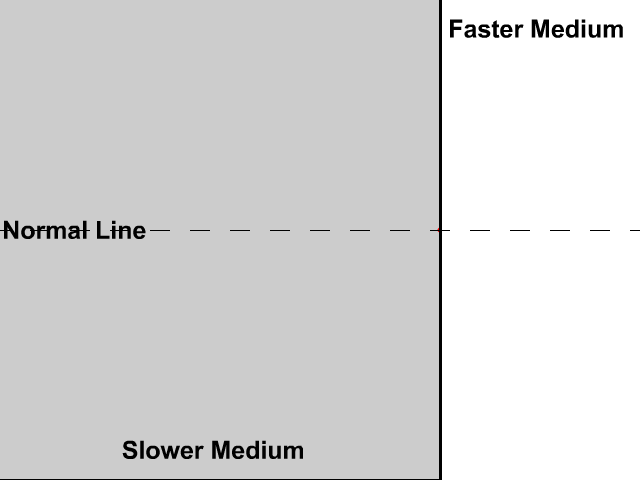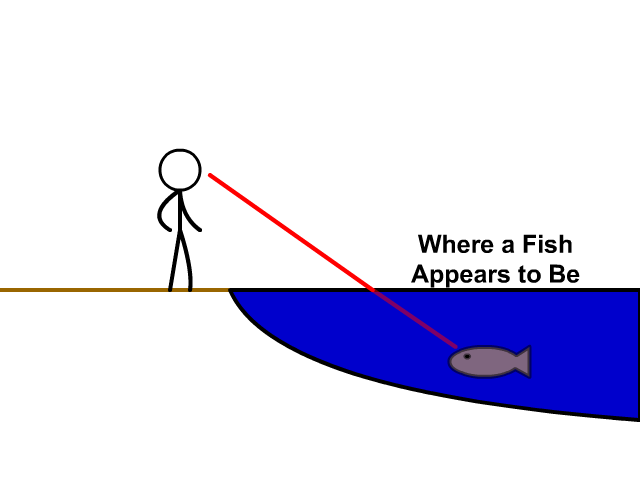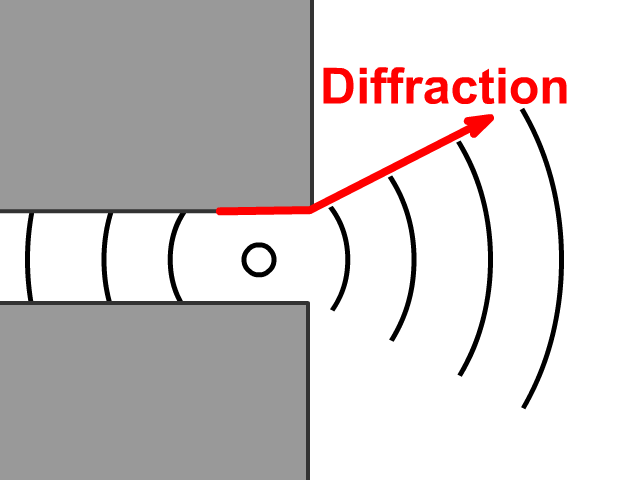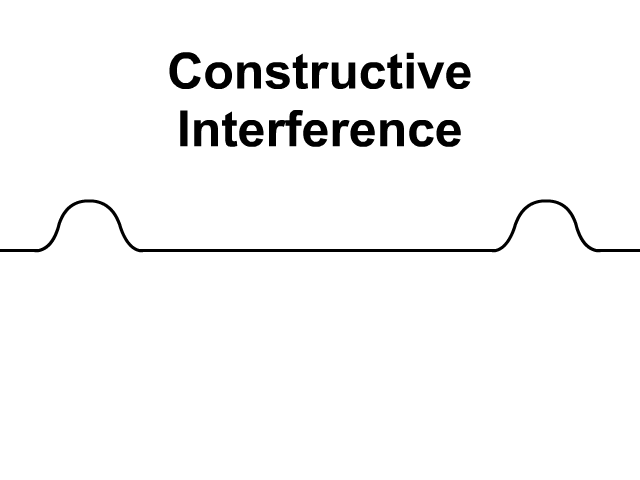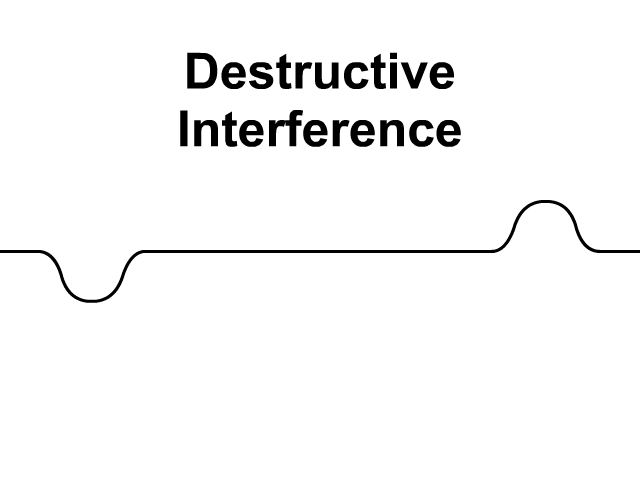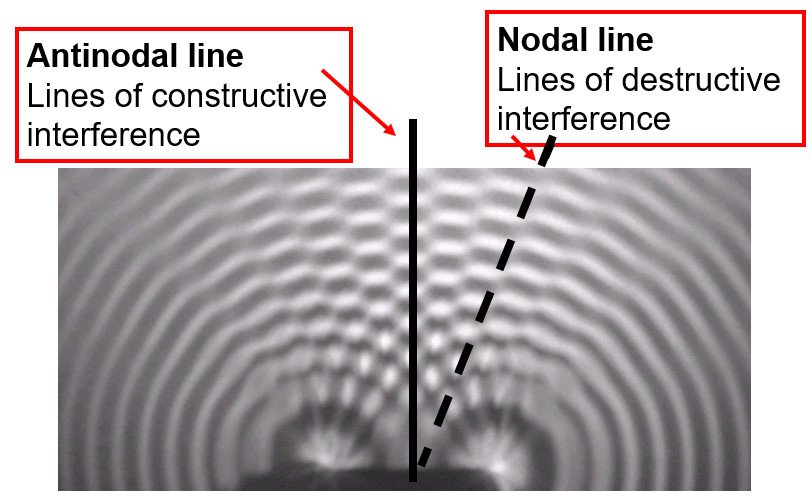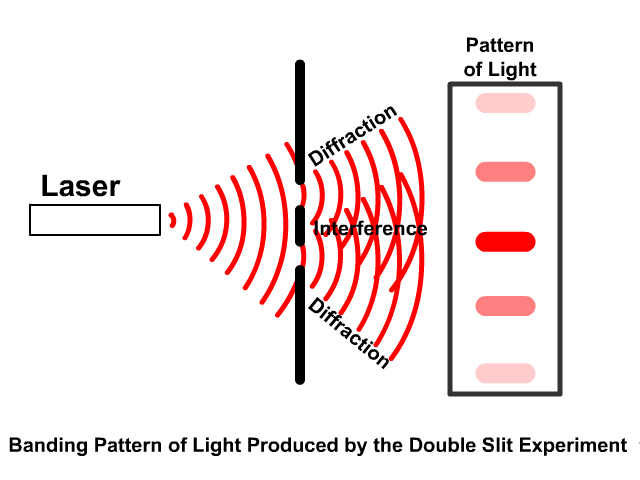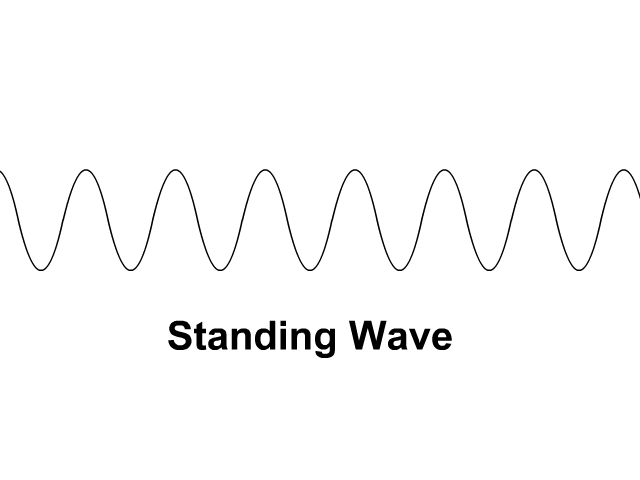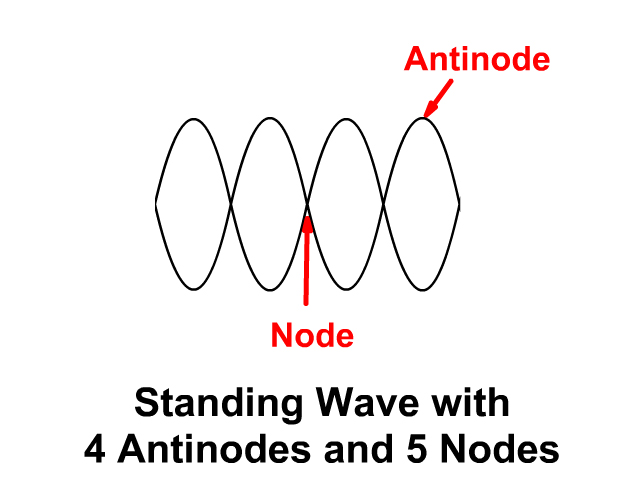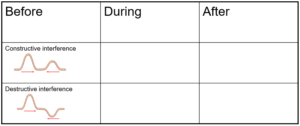Wave Phenomenon
There are four wave phenomena in all waves. These four phenomena are reflection, refraction, diffraction, and interference. Learn about these four properties with animated visuals.
Wave Reflection
Reflection is a bouncing back of a wave off a boundary. Two examples of reflection include light reflection in a mirror and sound reflection or echo. You are able to see yourself in a mirror because light rays bounce off you, hit the mirror, and reflect back to your eyes.
The starting wave before hitting a boundary is called an incident wave. After the reflection, the wave is called the reflected wave.
A boundary is any change of medium. If a wave is traveling in the air and hits water, the position that the air meets the water would be the boundary. At that moment, there would be a reflection and another wave phenomenon, refraction, you will see a little later on this page.
Wave Reflection off a Flexible Boundary
A flexible boundary is one that is allowed to move. Notice how the wave can move up and down at the boundary. Off a flexible boundary, the wave returns upright, or on the same side.
Wave Reflection off a Fixed Boundary
A fixed boundary is one that is not allowed to move. When the wave energy pulls up on the wall, the wall pulls down equally and inverts or flips the wave. This occurs due to paired forces seen the newtons third law lesson. Off a fixed boundary the wave returns inverted, or on the opposite side.
Law of Reflection
The Law of Reflection states that when a wave hits a barrier at an angle the reflection (Өr) is the same as the angle of incidence(Өi). If Өi was 25° then Өr would also be 25°.
A single beam from a light beam is a ray. In the animation, we are following the reflection of a single ray. The normal line, represented by a dashed line, is a line drawn perpendicular to the boundary where the light ray hits the new medium.
- The angle of incidence (Өi) is the angle from the normal line to the incident ray.
- The angle of reflection (Өr) is the angle from the normal line to the reflected ray.
Wave Refraction
Wave refraction is a bending that occurs as a light ray enters a new medium. Remember that wave speed will be the same until there is a new medium. Due to the change in speed, the transition into the new medium will create a bending.
The angle of incidence (Өi) is the incoming ray or wave. Here r stands for refraction in the angle of refraction (Өr).
The normal line in refraction diagrams is drawn through into the new medium since light travels through. The angle or refraction is measured from the normal line to the refracted ray.
Bending occurs towards the normal line if light travels from faster to slower in the new medium.
Refraction of a Fish in Water
A fish in water will appear to be in a different location because of refraction. Light travels slower in water than in air. Light bends away from the normal line as it exits water. A fish will appear to be straight ahead when in reality it is in a different position.
Wave Diffraction
Another property of a wave is diffraction. Diffraction is a bending that occurs as a wave travels past a corner. Unlike refraction, diffraction occurs in the same medium. For example, light in air will bend outwards around a corner but still in the same air. An opening as seen in the animation has two sides and bending would occur at both corners.
Wave Interference (Super-positioning)
Wave interference also called super-positioning occurs when waves cross each others paths. If matter crossed paths with other matter there would be a collision. Waves are not matter but disturbances and can travel through each other. Crossing paths causes an interference pattern while interacting in a shared space.
- Constructive interference occurs when waves cross paths with their amplitudes on the same side. Wave amplitudes will add to each other and make a larger overall amplitude while interacting.
- Destructive interference occurs when waves cross paths with their amplitudes on opposite sides. Wave amplitudes will subtract from each other and make a smaller overall amplitude while interacting.
Complete destructive interference occurs when equal amplitudes are on opposite sides and the waves disappear temporarily.
Wave Interference in a Ripple Tank
Wave interference can be seen in a ripple tank. A ripple tank is filled with water and used to study wave interactions.
- Antinodal lines are areas of constructive interference where wave amplitudes add to each other.
- Nodal lines are areas of destructive interference where wave amplitudes negate each other and waves are not seen.
The same nodal and antinodal pattern can be produced with light in double slit experiment. When you shine laser light through a sheet that has two thin slit openings close to each other you see a banding pattern instead of two bands of light.
Standing Wave
A standing wave is created by a wave and its reflection but only at frequencies where each end of a rope has a node. Standing waves have the same frequency, wavelength, and amplitude traveling in opposite directions and interfering.
- consists of nodes (amplitude) and antinodes (max amplitude)
- only at certain frequencies
- Higher frequencies will produce more standing waves but they will have smaller wavelengths
Watch standing waves being produced in an acoustic guitar to "Here Comes the Sun" by the Beatles.
Resonance
Resonance is a dramatic increase in the amplitude of a wave when the frequency of an applied force matches the natural frequency of the object. Musical instruments are made to amplify sound through resonance. Strings on a acoustic guitar will vibrate causing the base of the guitar to resonate the sound from the string. A forced vibration on a string creates a sympathetic vibration of a sounding board. A forced vibration is one you make and a sympathetic vibration results in another object as a result of a forced vibration.
Guitars use string density and wavelength produced to make notes.
Larger wavelength produce a lower frequency and perceived frequency, also called pitch.
In this video you can see resonance and a standing wave created to break a glass.
Wave Phenomenon Tasks and Questions
- What is a flexible boundary?
- Describe what happens to the wave after it bounces off a flexible boundary
- What is a fixed boundary?
- Describe what happens to the wave after it bounces off a fixed boundary
- Draw and label a diagram for reflection of a wave
- If an incident wave has an angle of incidence of 35°, what would be the angle of reflection?
- If a ray of light were traveling from Air to water at a 30° angle of incidence, would its angle of refraction be more than 30°, less than 30°, or equal to 30° on the water side?
- Is light bending toward or away from the normal line (on the air side) when you look at a fish in water where light travels slower?
- Describe what diffraction is
- Why can waves travel through each other and not collide?
- Compare and contrast constructive and destructive interference. How are they similar? How are they different?
- Finish off table by drawing the waves interacting during and after their interference
- What is a standing wave?
- A standing waves reflection must be the same ________________
- Draw and label (node and antinode) of a standing wave with 3 nodes and 2 antinodes
- What is true about the wavelength of a standing wave with a lower frequency?
- How many nodes and antinodes does this standing wave have?
- What is resonance?
- In as few words as possible describe the 4 phenomenon all waves have.
- Reflection:
- Refraction:
- Diffraction:
- Interference:
Links
- On to Sound Waves
- Back to the Main Waves Page
- Back to the Stickman Physics Home Page
- Equation Sheet

